Decorating your home or office with indoor plants is sure to bring joy and light to your atmosphere. To guarantee that your plants are healthy and thriving, you will need to make sure they are being met with the correct light requirements.
Knowing what type of light your plant needs will ensure that your houseplants keep safe from pests and other diseases.
But how do you choose exactly where to place your plants to get the most accurate amount of natural light? Or if they need a special type of lighting, how can you find the right ‘grow light?
This is where our indoor plant lighting guide comes into play.
Indoor plant light guide
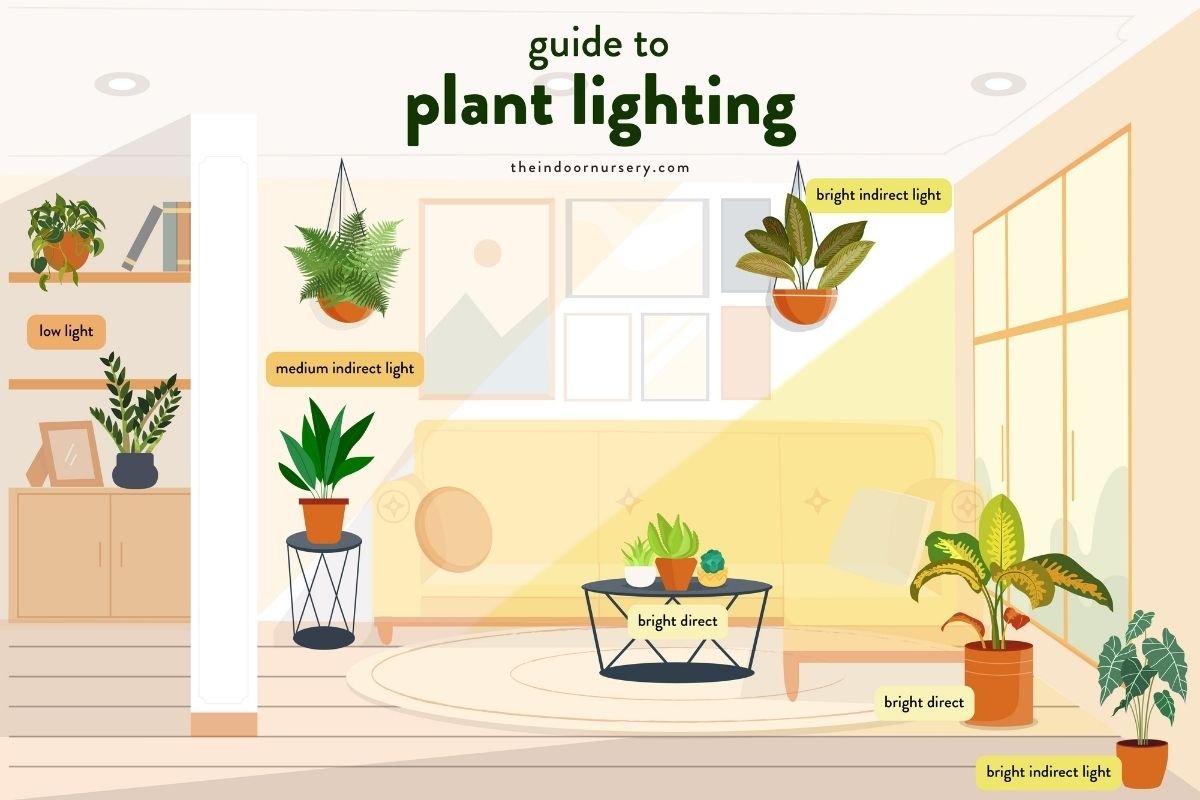
Certain plants like certain types of lighting–it is just in their nature, in their plant DNA. Light is like food for our plants. It is how they grow through photosynthesis, without enough adequate light they will just stay the same size or die. Most houseplants evolved in tropical or semi-tropical from all across the globe.
For example, think about how the Monstera plant you now have in your living room actually originates from the tropical forests of southern Mexico. Or how your snake plant comes from rocky, dry habitats in tropical Africa.
Of course, they are able to adapt a bit, but if you can recreate that lightning that they experience in their forest or jungle environment, your plant will be super happy. There are some plants that like lots of bright light whereas others are typically hidden on forest floors (like ivy) and don’t require much light.
Direct light
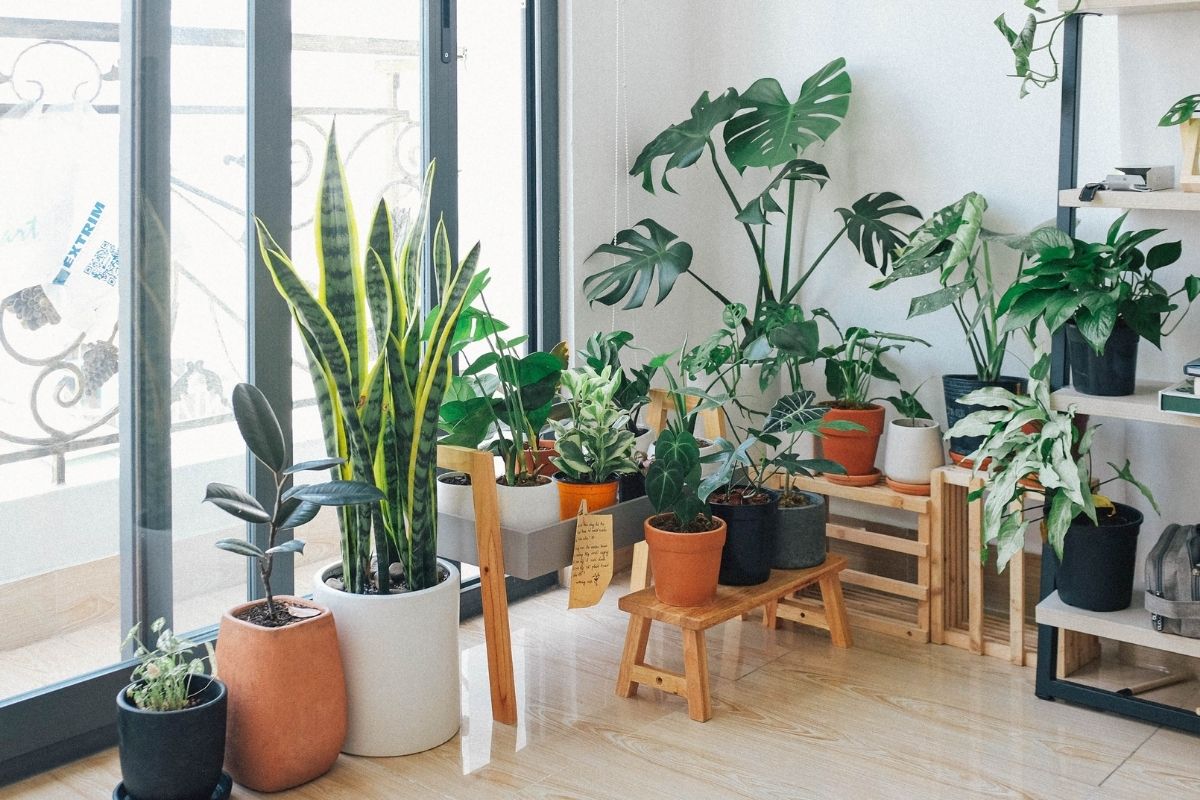
Direct light is one of the cheapest and easiest ways to get your plant the natural sunlight it needs to grow. It costs nothing, and all you need to do is place your plant near a bright window to receive unfiltered light.
This type of light can mimic the environment of a rainforest, which receives 12 hours of sunlight per day.
Yet the light intensity all depends on what directions the windows are facing for the indirect light to penetrate. Here we will explain below all the different examples of direct light.
Direct light example
- north-facing windows: If your window is facing north east or northwest you may get one to two hours of sunlight per day. This type of light intensity is best for plants who thrive in little to no light, like the ones who grow on the dark forest floor. These plants can be placed directly in front of the window.
- south-facing windows: South-facing windows will get the most direct sunlight during the late morning and afternoon. This position is best for plants that demand full sunlight and want to be in direct sun. These plants can be placed up to 10 feet away.
- east-facing windows: Plants placed near east-facing windows will always receive a bit of the sun’s first morning rays. This is the best option for medium-light plants. These plants can be placed up to 10 feet away.
- west-facing windows: West-facing windows receive the most direct sunlight in the afternoon until evening sunset. High-light plants work best here and can be placed up to 10 feet away. Other plants may risk burning in this direct sunlight.
Direct light plants
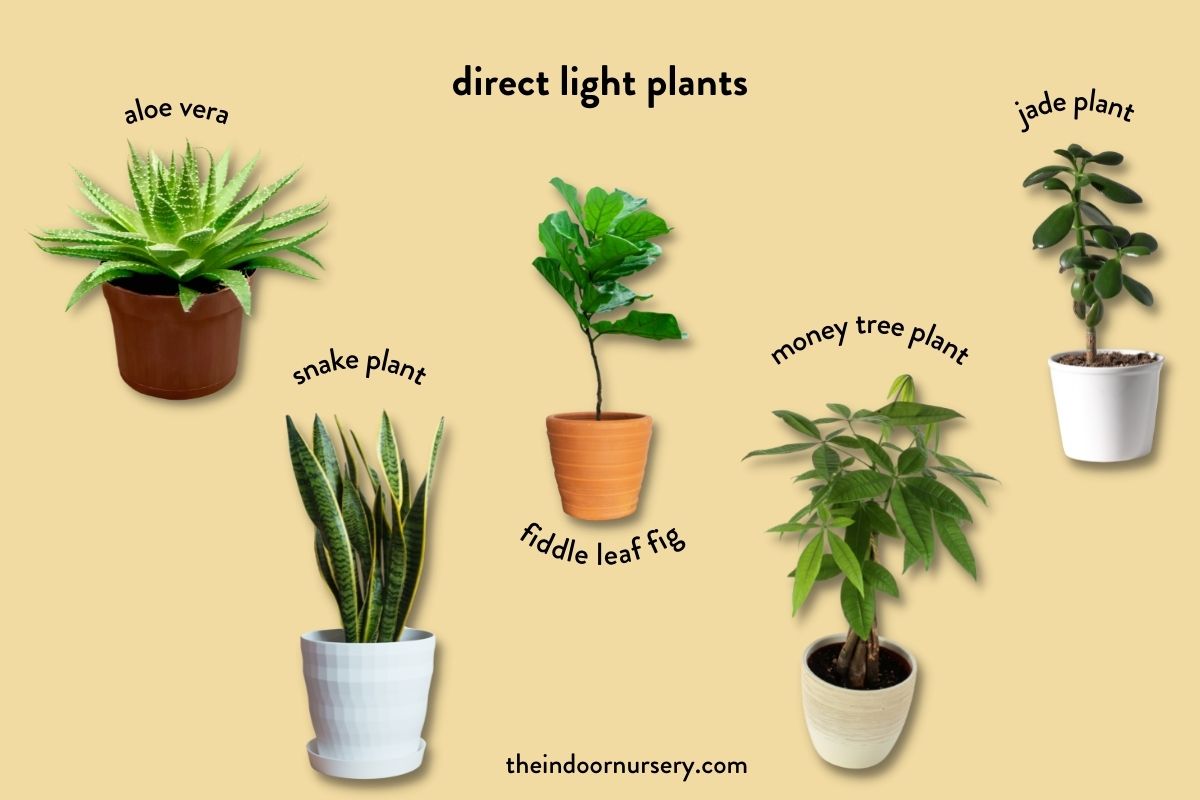
Direct sunlight plants are ones that originally thrive in wide, open terrains like cacti, herbs and succulents. They are used to soaking up many hours of sun, as they receive more than 6 hours of direct sunlight per day.
Here are a few plants that like direct light:
- Aloe vera
- Jade plant
- Echeveria
- Snake plant
- Geranium
- Sweet Basil
- Money Tree Plant
- Yucca Plant
- Fiddle Leaf Fig
- Birds of Paradise
If you don’t have access to bright direct light, then pop your plants under a few grow lights. You can even buy LED grow lights that blend right in with your normal home décor. We looked into all of them and have tested a few out ourselves. Learn about what to look for in grow lights in our purchase guide:
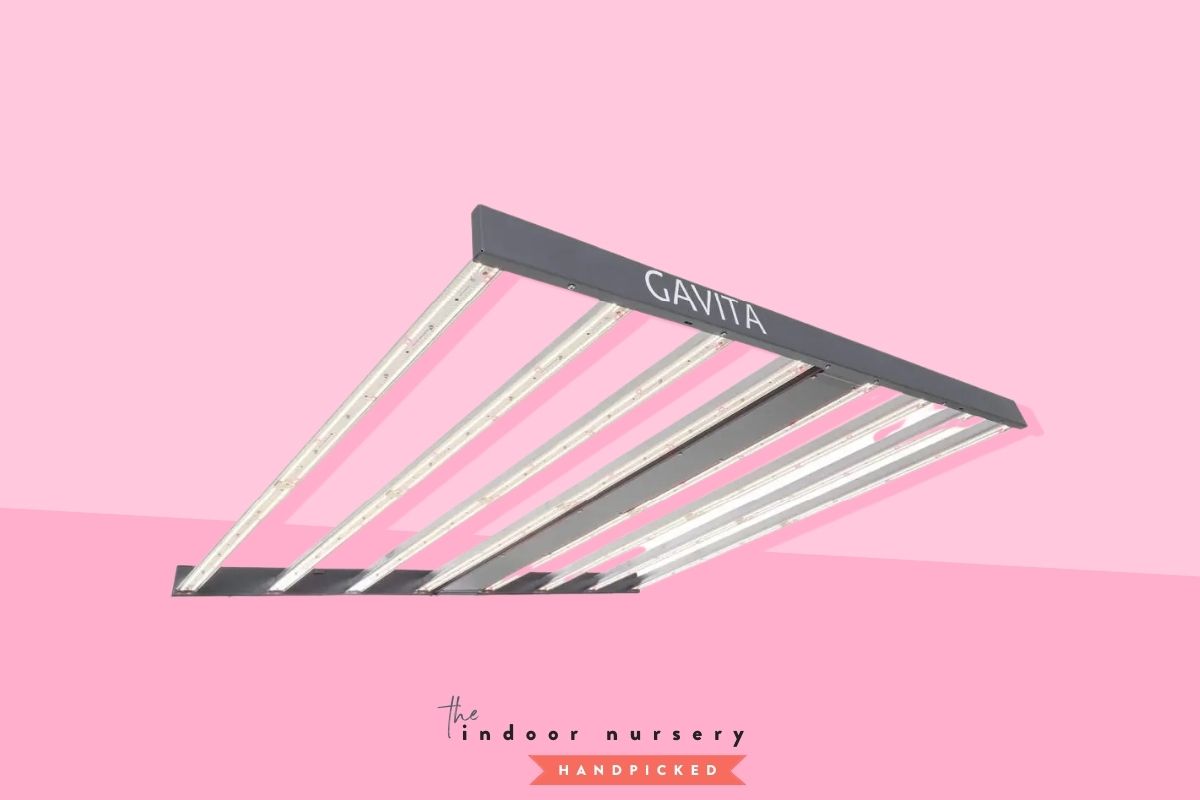
If you choose to go the grow light path, then take a minute to learn how to use grow lights. We also wrote an epic about the light spectrum and how that affects plant growth for all you science nerds out there. (Okay, we’re the science nerds.) If you understand how light affects plant growth, then you can be sure to choose the right grow light and put the right settings for your little plant babes.
Bright indirect light
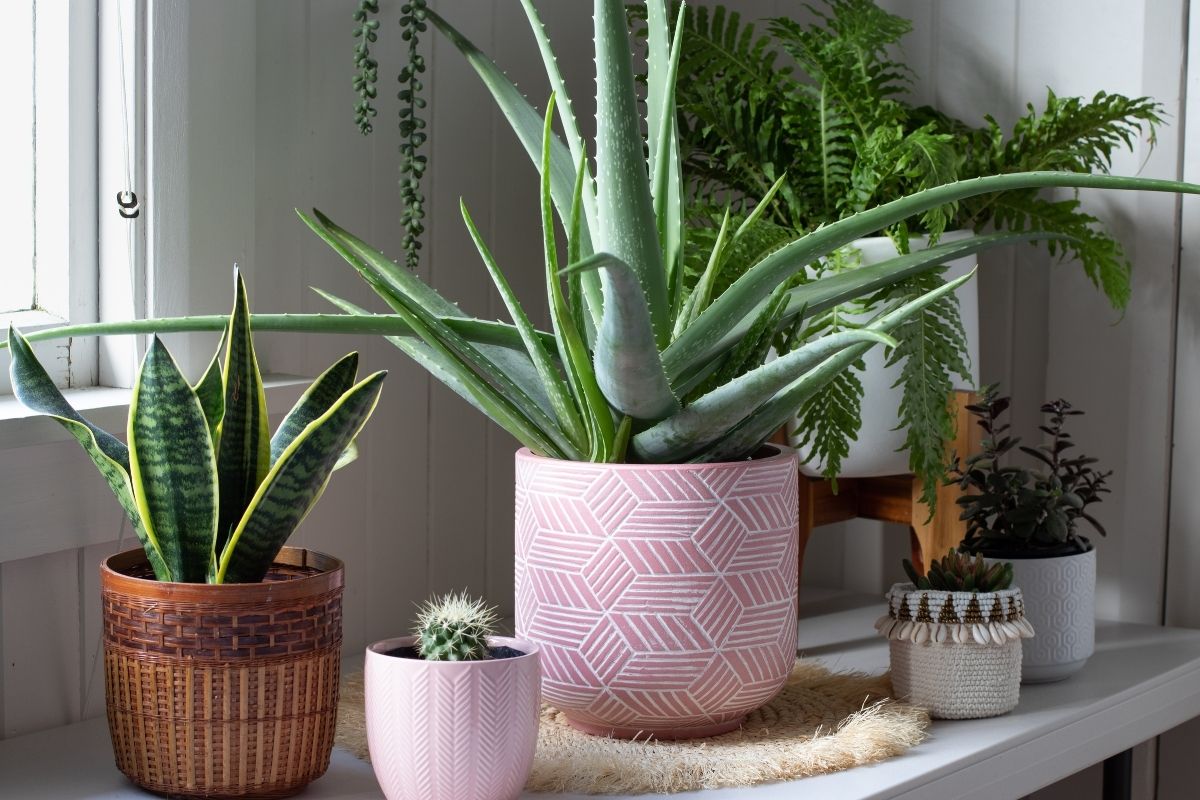
Bright indirect light is more when the sun ray’s don’t directly hit your plant; but actually bounce off something first before reaching your plant. You will know your plant is placed perfectly in bright indirect light, if it casts an indistinct shadow.
It can also be light shining through sheer curtains, or reflecting off something else, like a plant sitting on a shaded porch.
The test for knowing if your plant is in bright indirect light or not, is called ‘the shadow technique.’ If there is a perfectly cast shadow, your plant is in direct light. If it has blurry edges, it is indirect light.
bright indirect light example
- north-facing window: You can place your plant close to the window.
- south-facing window: Medium indirect light and low light plants should be placed at a safe distance from south-facing windows to avoid excessive sunlight.
- east-facing window: Indirect light is often found with east-facing windows, you can place your plant in front of this window with a sheer curtain between the light source.
- west-facing window: Plants can also be placed in front of a west-facing window with sheer curtains, because the amount of sunlight per day is just for a few hours.
Bright indirect light plants
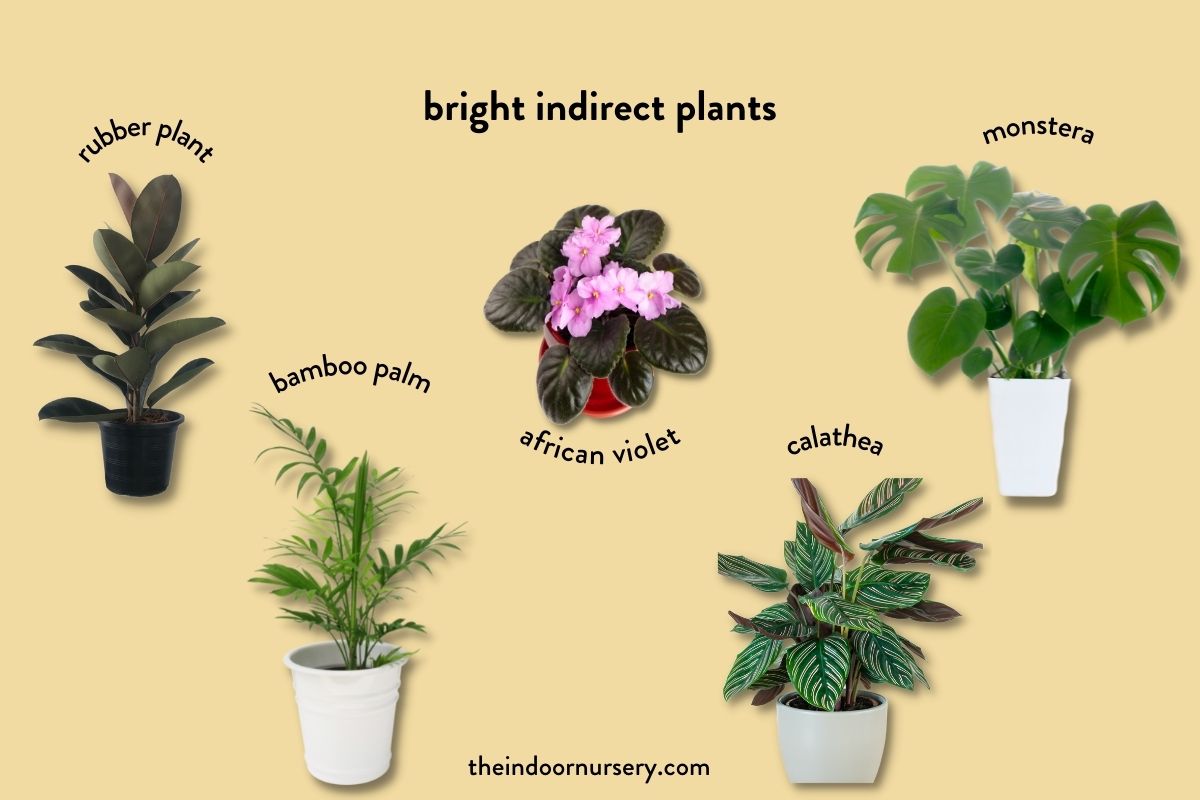
The plants that thrive in bright indirect light will most likely like north & east facing windows. These plants are more coming from tropical rainforests, where they like low lighting and partial sunlight. They grow high enough to reach a bright light source, but also like to be protected by trees and the rainforest canopy.
Here are some plants that like bright indirect light:
- Kentia Palm
- Rhapis Palm
- Bamboo Palm
- Money Plant (Pachira)
- Dracaena marginata
- Phalaenopsis Orchid
- African Violet
- White Bird of Paradise
- Areca Palm
- English or Hedera Ivy
- Schefflera
- Rubber Plant (Ficus elastica)
- Monstera
- Sago Palm (Cycad)
- Peperomia
- Calathea
- Dracaena Warneckii
- Prayer Plant (Maranta)
- Dieffenbachia
- Anthurium
- Alocasia
- Bromeliad species
- Most fern species
Medium indirect light
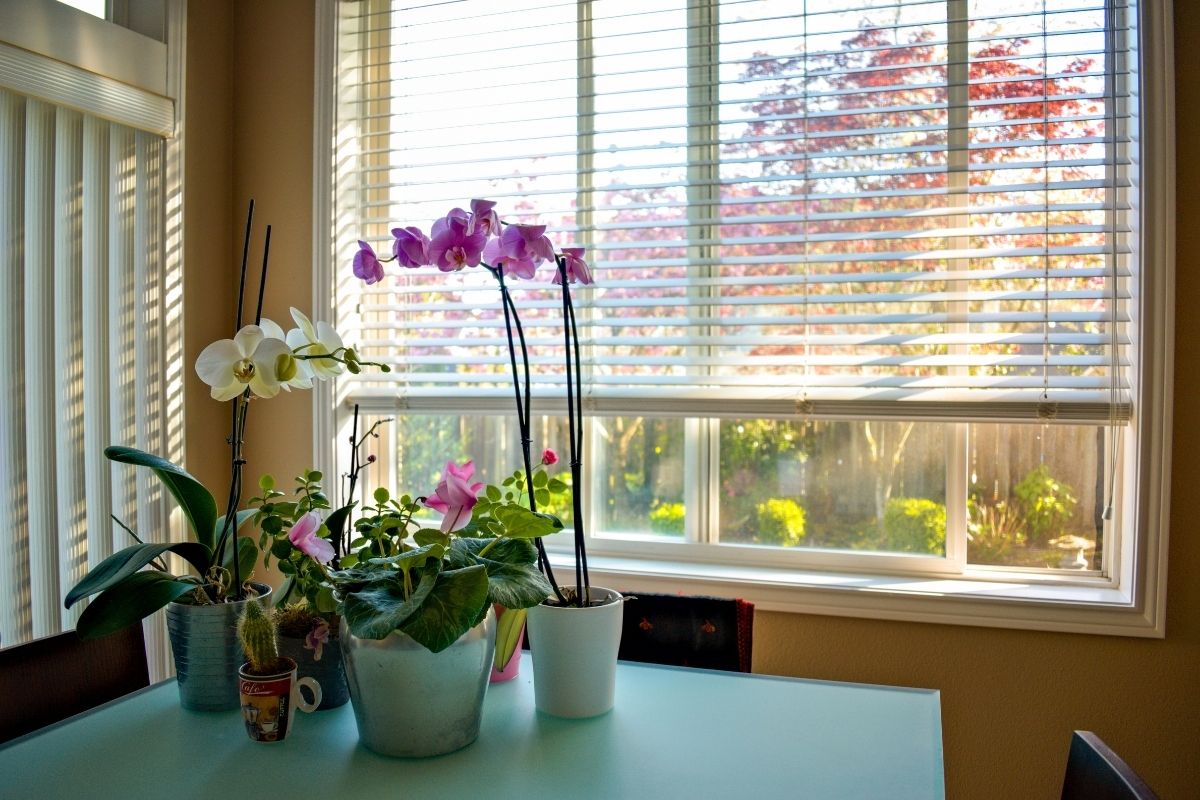
Medium indirect light intensity is light from the sun that is filtered, but not blocked. For example, you wouldn’t have any curtains or blinds, but it would be a spot that has some shade, but also receives sunlight. You can install blinds that let in enough sunlight while still keeping your privacy.
Plants that thrive in medium light are usually found in natural habitats that are shaded by tree canopies.
Medium indirect light example
- north-facing windows: Medium indirect light plants should be placed at a safe distance from north-facing windows to ensure they receive the right amount of light.
- south-facing windows: Plants should only be placed here during the winter when the light is less intense. Or eight to twelve feet from the window.
- east-facing windows: Medium indirect light plants should be placed at a safe distance from east-facing windows to ensure they receive the right amount of light.
- west-facing windows: Medium indirect light plants should be placed at a safe distance from west-facing windows to avoid excessive sunlight.
Medium indirect light plants
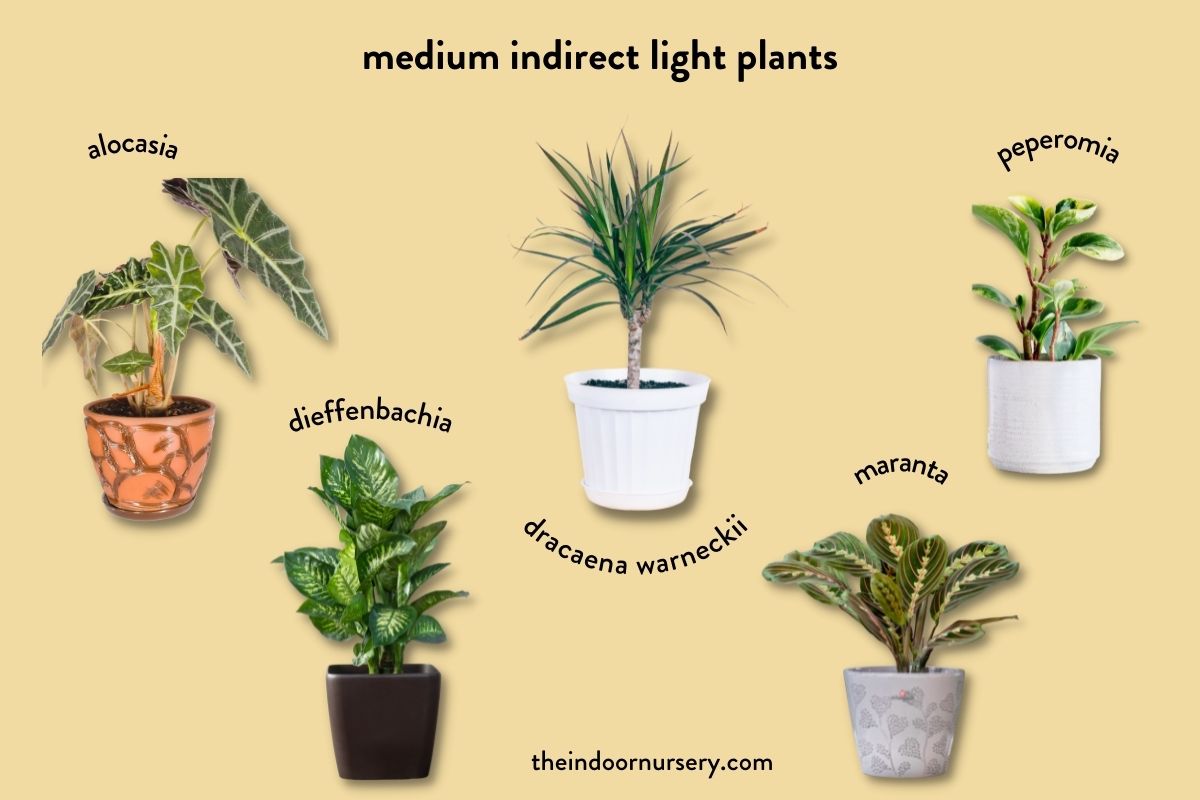
Many tropical houseplants that are low-growing will like medium indirect light. Their natural habitat is the forest floor, where they receive a lot of light but it is filtered by forest canopies, trees and vines.
- Alocasia (elephant ears)
- Anthurium.
- Aspidistra (cast iron plant)
- Calathea (prayer plant)
- Dracaena (wide leafed varieties)
- Ferns (most varieties)
- Howea Forsteriana (kentia palm)
- Maranta
- Rubber Plant (Ficus elastica)
- Monstera
- Sago Palm (Cycad)
- Peperomia
- Calathea
- Dracaena Warneckii
- Prayer Plant (Maranta)
- Dieffenbachia
- Anthurium
- Alocasia
- Bromeliad species
Low light
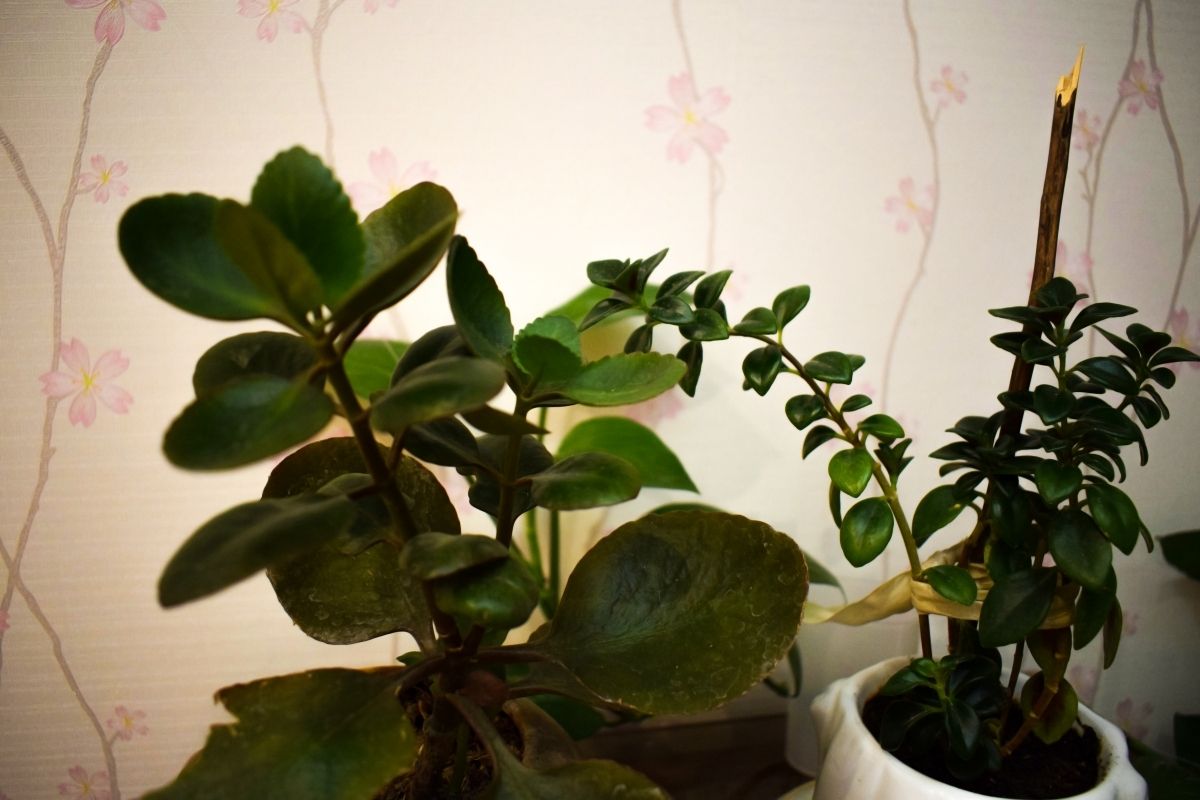
Low light plants can survive in the darkest corners, plants that can thrive in low light conditions are usually ones that can grow on the forest floors. Low light is often found in rooms with only a few windows or rooms with window blinds.
Low light example
- north-facing windows: You can place your houseplants directly in front of north facing windows as they won’t receive too much sunlight.
- south-facing windows: Plants should only be placed here during the winter when the light is less intense. Or if this window is blocked by something, your plants can be placed here.
- east-facing windows: You can place your houseplants up to 5 inches away from an east-facing window.
- west-facing windows: Low light plants should be placed at a safe distance from west-facing windows to avoid excessive sunlight.
Low light plants
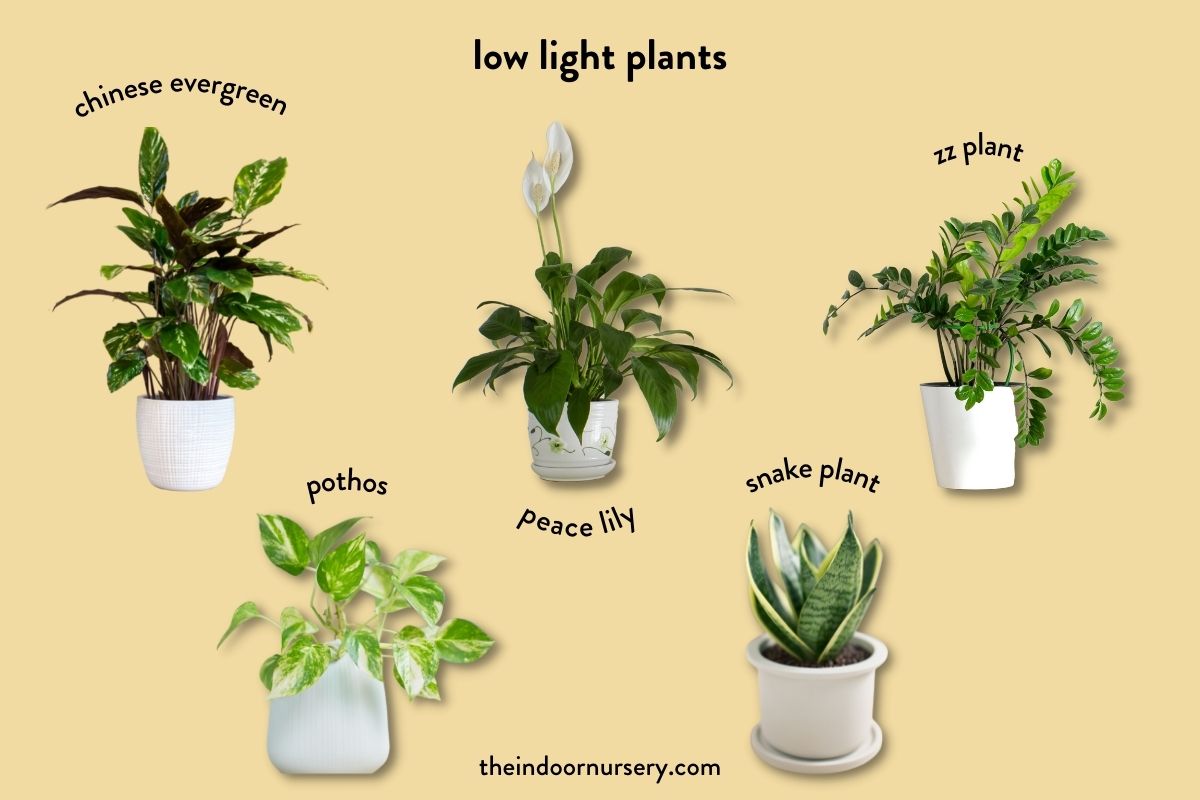
There are just some plants that can thrive in darkness. These plants are super adaptable to their environment and can tolerate low light. They may grow slower and not need as much water, as they will not be in photosynthesis much, but will still have some healthy plant growth.
- Chinese evergreen
- African violets
- Peace Lily
- Janet Craig Dracaena
- Ferns
- Ivy
- ZZ plant
- Pothos
- Snake plant
If you have a really dark room, you can also get some fluorescent lights or use artificial lighting to help your plant grow. Set a timer if you are using supplemental light to help your plants grow in less natural light.
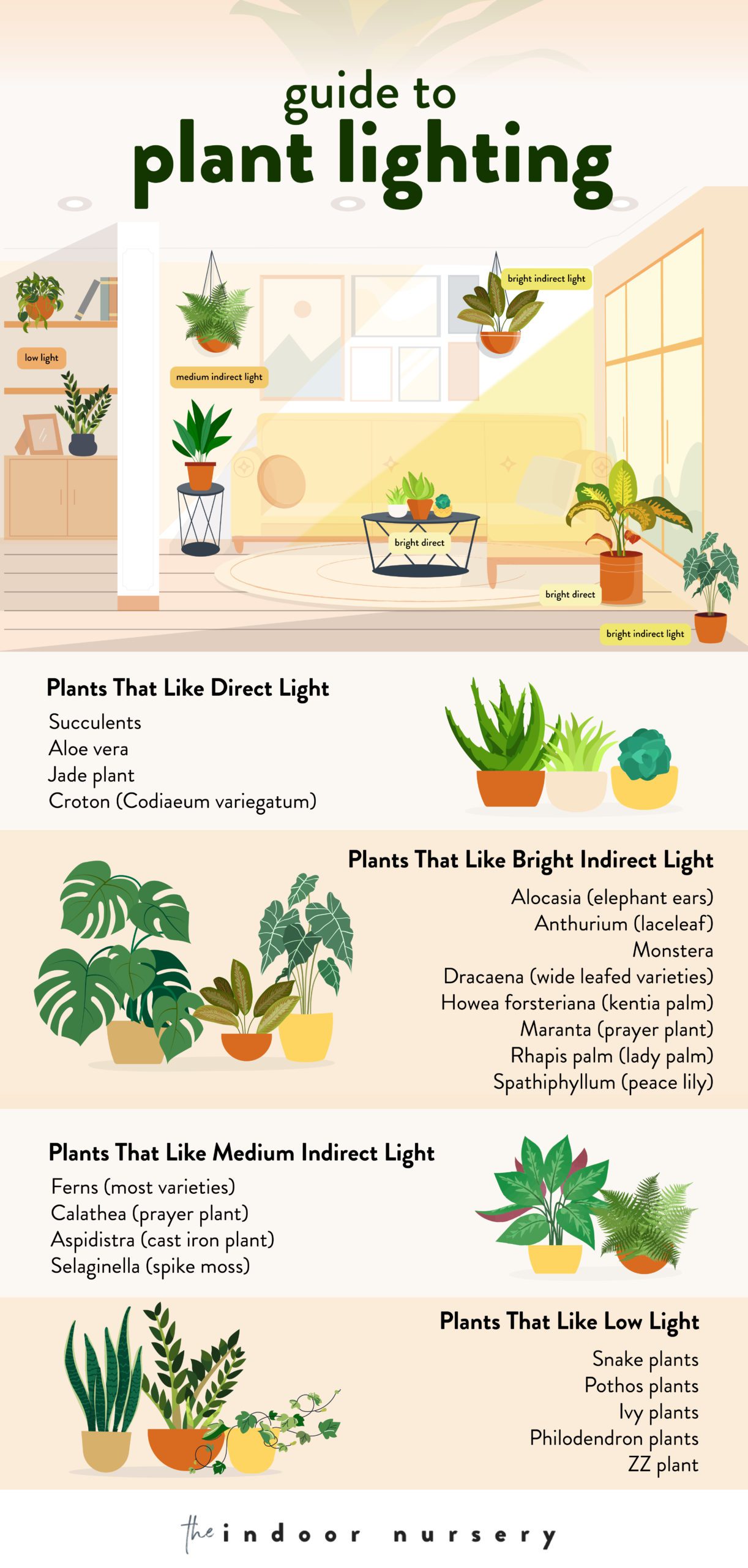
like this infographic? use it! here’s the code:
More about lighting
- How To Use Grow Lights For Indoor Plants
- 5 Best Grow Light Strips For Indoor Plants
- Our *hands on* MARS HYDRO TSW 2000 review (with photos)
- Understanding weed light cycles: Get the most from your harvest
- Indoor plant lighting guide: where to put your plants
- How close should grow lights be to plants?
- Best grow lights for seedlings: how to sprout your seedlings safely
- Guide: full-spectrum light for plants (+grow light spectrum chart)
- 10 best LED grow lights for indoor plants

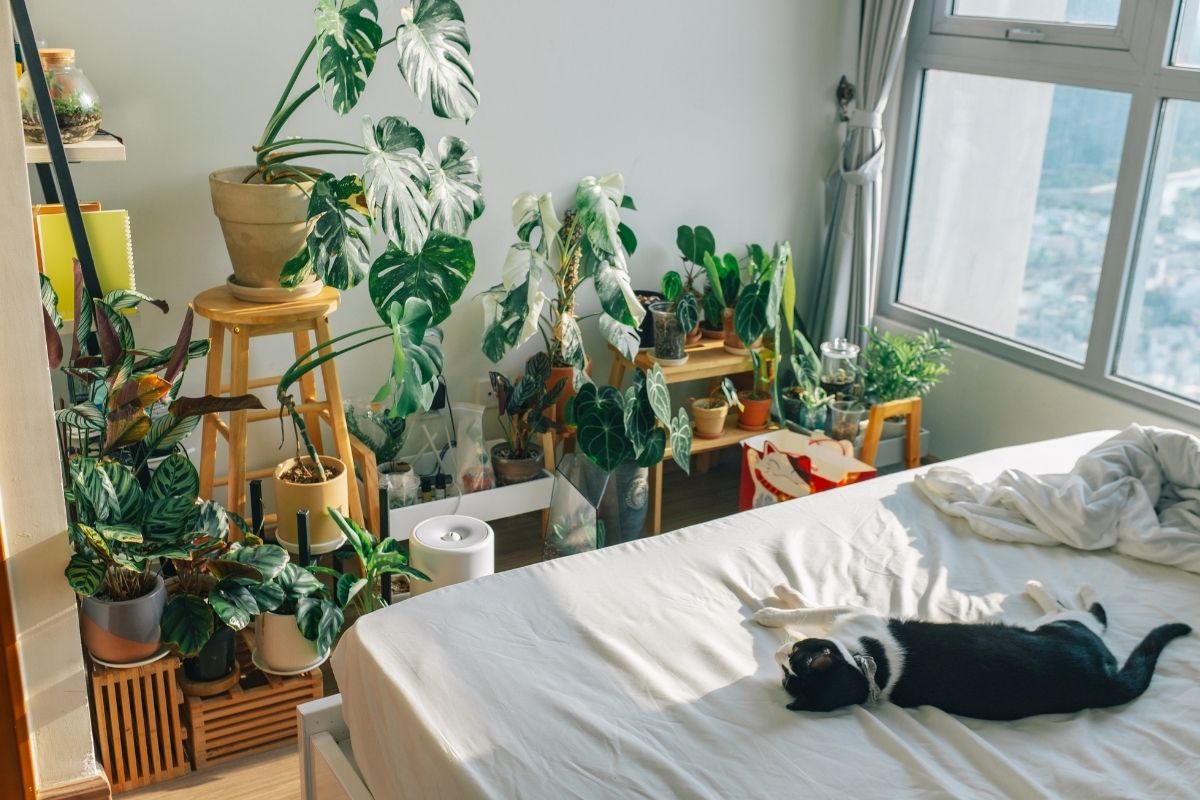

This is terrible information. It says for a west facing window bright plants can be 10ft away and everything else burns but also medium indirect plants can be right in front of the windows and low light plants 5 inches away from window. That is all contradicting. Nothing can be trusted.
Hey, Nausuada! Whoa.. you’re right. That is an oversight on my part. I was working with someone who I thought had more experience with plants than she did, which I’ve since discovered and have stopped. I’ve updated this information so that it’s accurate. I hope this is more helpful and thank you for reading and calling this to my attention!